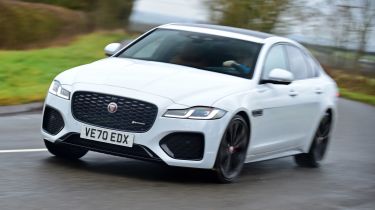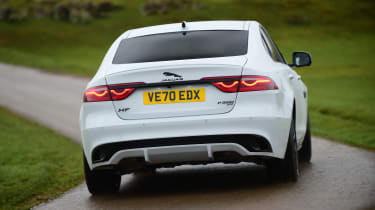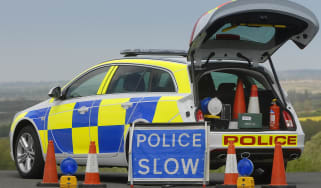Jaguar XF saloon - Engines, drive & performance
The Jaguar XF is fun to drive, although its advanced diesel engines are more about smoothness and economy than punchy acceleration
Following the example set by its smaller XE sister, the Jaguar XF is a real contender in its class and we think it’s close to the BMW 5 Series when it comes to driving fun and handling prowess. Its entry-level hi-tech diesel engine is more focused on low running costs than high performance, but sportier petrol engines are available for those who want them.
The choice of 2.0-litre diesels has been reduced to just one D200 engine with 201bhp and an eight-speed automatic transmission. The latter shifts gears swiftly and smoothly, and buyers can now only specify rear-wheel drive, with the four-wheel drive diesel having been discontinued.
The Jaguar XF is a comfortable car and among the very best to drive of its type. You can tweak the steering, engine and gearbox settings, and on cars fitted with adaptive suspension, the firmness can be adjusted for a sportier drive.
In place of a regular traction-control system, Jaguar offers something called All-Surface Progress Control (ASPC) – a development of technology from the company’s off-road-focused sister brand Land Rover to make driving on snow, ice or wet grass easier. When activated, it overrides your accelerator and braking inputs at low speed if you’re struggling for grip, allowing you to focus solely on steering the car.
More reviews
If you want even more traction in these conditions, Jaguar also offers four-wheel drive for the XF. It’s available with the P300 petrol, providing greater grip in slippery conditions. Most of the time you don’t notice it working – it’s as much fun as the regular, rear-wheel-drive XF, but provides extra reassurance on wet and slippery surfaces, and reduces the chances of wheelspin if you need to pull away quickly.
Jaguar XF diesel engines
Before its facelift, the Jaguar XF diesel was available with 161, 178 or 247bhp, but this has now been simplified with the arrival of a single 201bhp 2.0-litre engine badged D200. This should suit the majority of buyers, but there's now no manual gearbox option, and powerful six-cylinder diesels also appear to be off the table.
With rear-wheel drive, the standard D200 takes 7.6 seconds to get from 0-62mph. The four-wheel drive version has since been discontinued, but was 0.2 seconds slower owing to its extra weight. Both can top 140mph, where legal to do so.
Petrol engines
Two 2.0-litre petrol engines are available with 246 and 296bhp respectively, badged P250 and P300. The former dispatches 0-62mph in 6.5 seconds, while the latter manages it in 5.8 seconds with four-wheel drive.
The P300 has a smooth power delivery, with enough grunt to propel the car out of corners, without having to rev it particularly hard. The eight-speed automatic transmission ensures the engine is almost always in its sweet spot, with smooth shifts. Dynamic mode increases how much engine sound is audible inside the car, but it fails to match the aural excitement of a six-cylinder engine.













